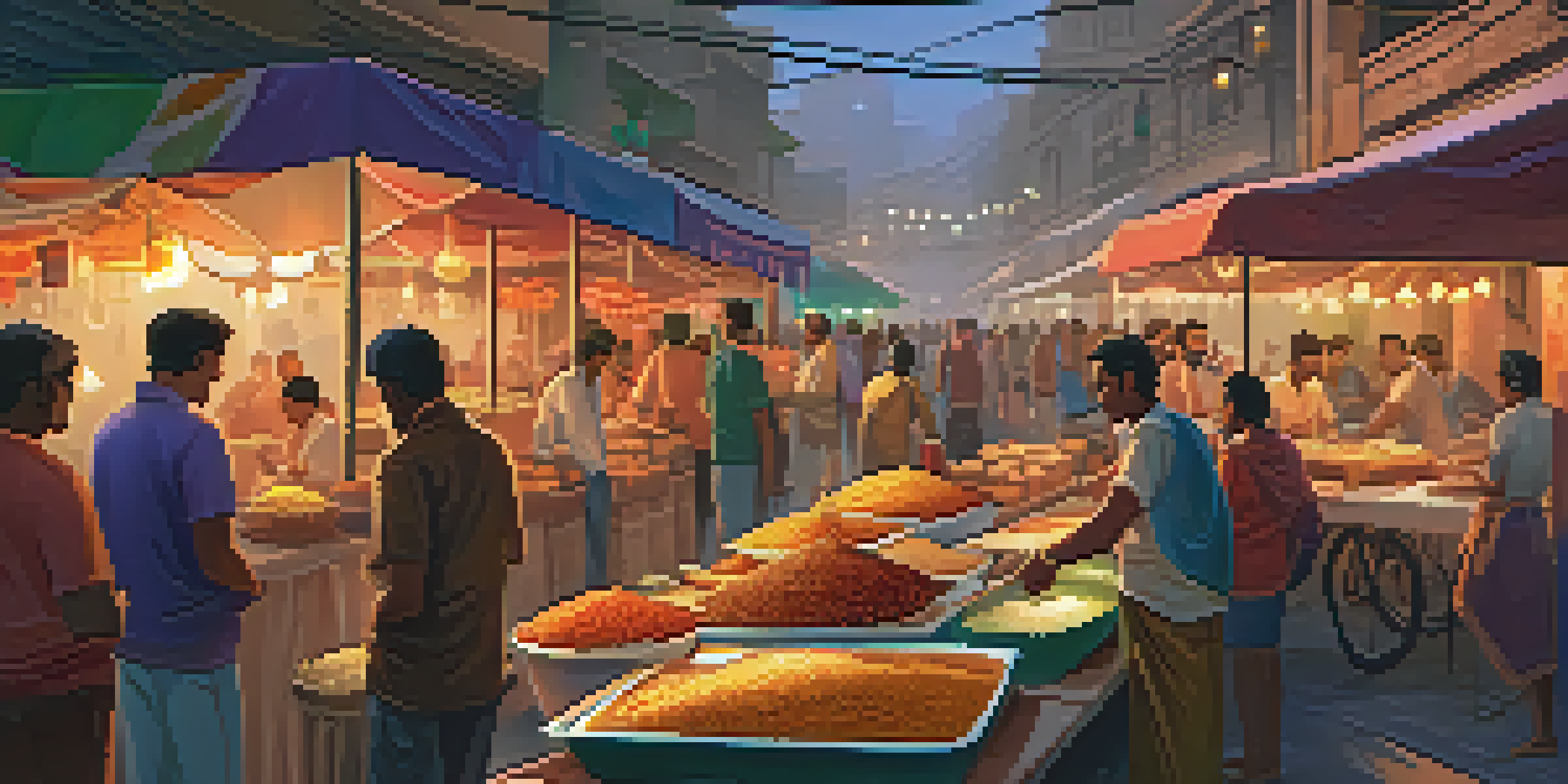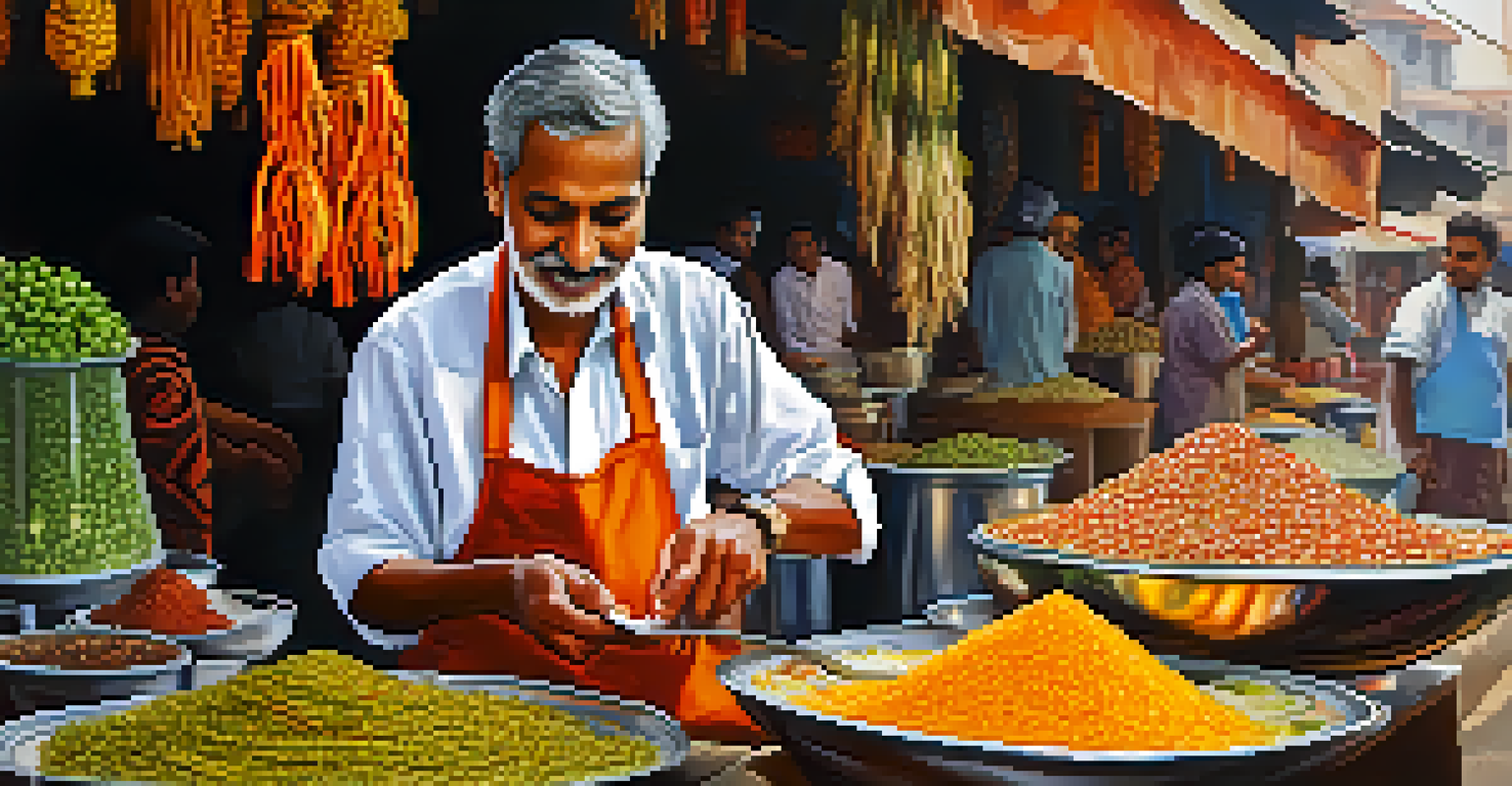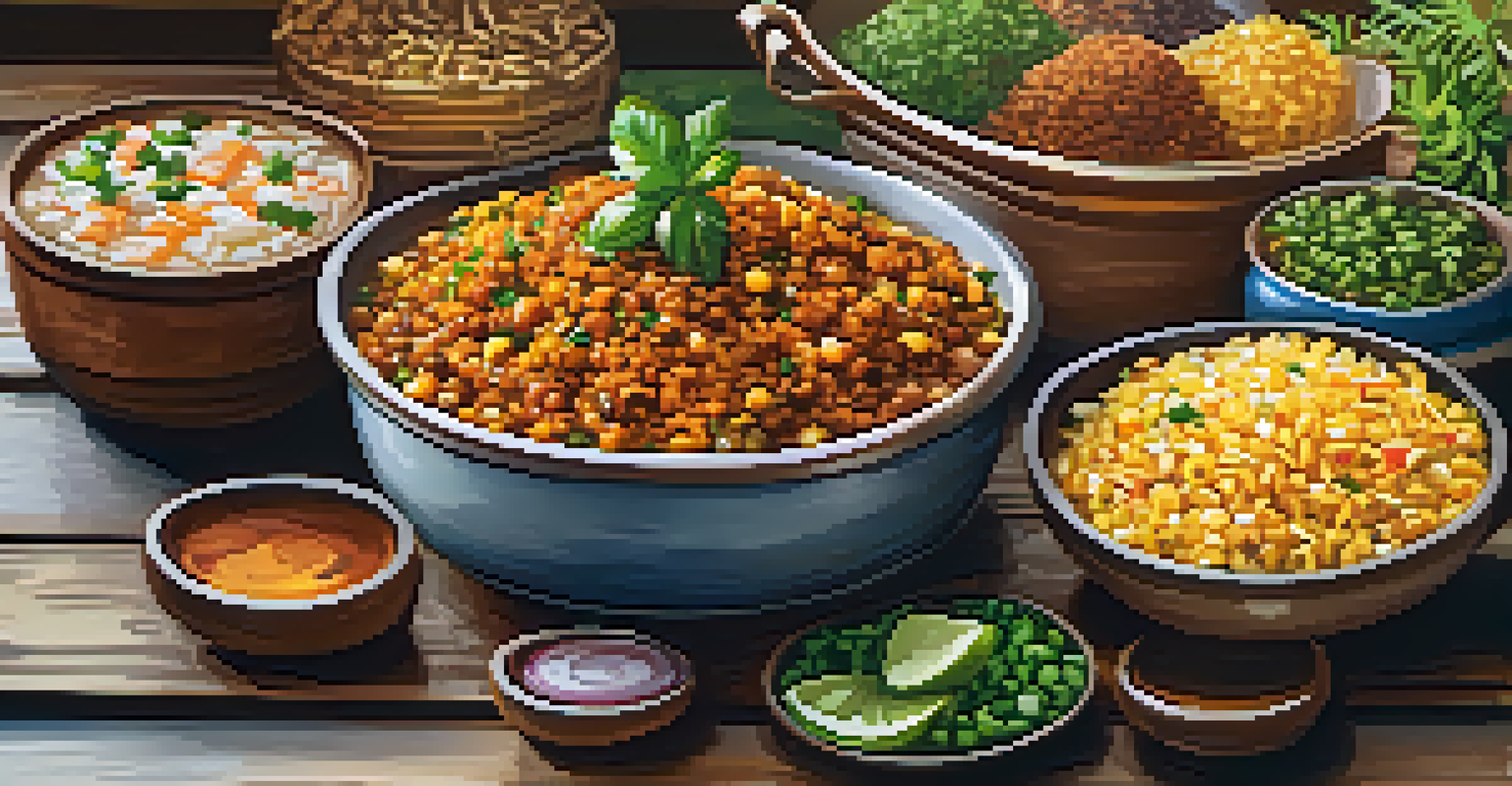Street Food: A Taste of India’s Urban Culinary Heritage

The Rich History of Indian Street Food
Indian street food has a rich tapestry woven from centuries of traditions. It reflects the diverse cultures and regional influences that have shaped India over time. From the bustling markets of Delhi to the coastal stalls in Mumbai, each dish tells a unique story.
Food is not just what we eat, but a reflection of who we are and where we come from.
Street food began as a necessity, providing affordable meals to laborers and travelers. Over time, it evolved into an integral part of urban life, where flavors, techniques, and ingredients intermingle. Today, it stands as a testament to India's culinary innovation and resilience.
The history of street food is also tied to the migration of communities, each bringing their flavors and cooking practices. This blend of influences has given rise to some of the most iconic dishes we enjoy today, making street food a delicious representation of India’s urban heritage.
Iconic Indian Street Food Dishes
When we think of Indian street food, a few dishes immediately come to mind. For instance, Pani Puri, with its crispy shells filled with spicy water, is a favorite among many. Similarly, Vada Pav, often dubbed the 'Indian burger', showcases the delightful mix of potatoes and spices in a bun.

Another must-try is Chaat, a savory snack that varies from region to region but always delivers a burst of flavors. Each bite offers a balance of tangy, spicy, and sweet, making it an irresistible choice for street food lovers. Don’t forget to try Pav Bhaji, a spicy vegetable mash served with buttered bread, which is a staple in Mumbai.
Street Food Reflects Cultural Heritage
Indian street food embodies the diverse cultures and traditions of various regions, showcasing unique flavors and ingredients.
These dishes not only tantalize the taste buds but also evoke fond memories of bustling markets and vibrant street corners. Each plate tells a story, inviting food lovers to immerse themselves in the culture and community surrounding it.
Street Food: A Reflection of Local Culture
Street food is more than just tasty bites; it reflects the culture and traditions of the area it comes from. Each region in India has its specialties, shaped by local ingredients, climate, and historical influences. For example, the use of seafood in coastal cities contrasts beautifully with the vegetarian offerings in the north.
Street food is the soul of the city, a canvas that showcases the vibrant colors of culture and tradition.
This culinary diversity makes street food a focal point for understanding local customs and lifestyle. Vendors often continue family recipes passed down through generations, preserving culinary heritage while adapting to modern tastes. It’s a beautiful blend of history and innovation on a plate.
Moreover, street food gives insight into the social fabric of urban India, where communal dining and sharing food create connections among people. It’s not just about eating; it's about experiencing the warmth of the community and the vibrant life that unfolds around food stalls.
The Role of Vendors in Street Food Culture
The heart of street food lies in the vendors who serve it. These culinary artisans are often the backbone of urban food culture, working tirelessly to create delicious dishes that bring joy to countless patrons. Their passion for food is evident in every dish they prepare.
Many street food vendors have their unique stories, often starting with a small stall and growing into beloved local institutions. They invest their time and energy into perfecting their craft, sometimes even innovating on traditional recipes to cater to modern tastes. This dedication is what makes their food special.
Vendors: Heart of Street Food Culture
Street food vendors play a vital role in urban food culture, creating a sense of community and preserving culinary traditions.
Moreover, these vendors foster a sense of community, often becoming familiar faces in their neighborhoods. They not only serve food but also create spaces for social interaction, where people from all walks of life come together to enjoy a meal and share stories.
Health and Hygiene in Street Food
While street food is a delightful experience, concerns about health and hygiene often arise. It’s essential to choose vendors who prioritize cleanliness and food safety. Observing the preparation process can give you a sense of the vendor's practices and commitment to hygiene.
Many cities are taking steps to improve street food safety standards, implementing regulations to ensure that food is prepared in sanitary conditions. This initiative not only protects consumers but also enhances the reputation of street food vendors, making it a win-win situation.
As a food lover, being informed is key. Always opt for freshly made items and places with high foot traffic, as these are indicators of quality and popularity. Enjoying street food can be both a delectable and safe experience when approached with mindfulness.
The Growing Popularity of Street Food Festivals
In recent years, street food festivals have gained immense popularity, celebrating the rich tapestry of flavors that India has to offer. These festivals bring together a variety of vendors, allowing food enthusiasts to sample dishes from different regions all in one place. It's like a culinary tour without leaving your city!
These events not only highlight the diversity of street food but also promote local vendors, helping them reach a broader audience. They often feature live cooking demonstrations, competitions, and cultural performances, creating an immersive experience for attendees.
Health Standards Are Improving
Concerns over health and hygiene are being addressed through improved safety regulations and consumer awareness in street food markets.
Street food festivals also encourage community engagement, bringing people together to appreciate the culinary arts. They serve as a reminder of the joy and connection that comes from sharing food, reinforcing the idea that food is indeed a universal language.
Embracing the Future of Indian Street Food
The future of Indian street food looks incredibly bright, with an increasing number of young chefs and entrepreneurs entering the scene. Many are experimenting with fusion cuisine, blending traditional recipes with global influences, which adds exciting new dimensions to classic dishes.
Moreover, the rise of social media has elevated street food’s visibility, allowing vendors to showcase their creations and connect with a larger audience. This digital platform has opened new avenues for marketing and has even led to the birth of 'Instagrammable' food trends that attract food lovers.

As street food continues to evolve, it remains rooted in its rich heritage. The blend of tradition and innovation ensures that this culinary culture not only survives but thrives, paving the way for future generations to explore and enjoy the vibrant world of Indian street food.